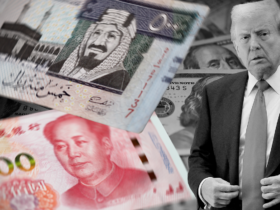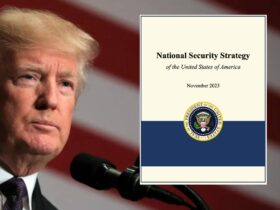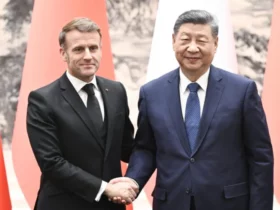BRI meets “Two Corridors”.
BRI meets “Two Corridors”.
By Mehmet Enes Beşer
As China and Vietnam celebrate the 75th anniversary of diplomatic ties, their bilateral relationship is quietly but fundamentally transforming. What was previously dominated by ideological closeness and geographical neighborhood is evolving into a pragmatic and vision-driven relationship founded on mutual strategic interests. In the context of a shattered post-COVID international order, rising geopolitical rivalries, and waning confidence in traditional alliances, China-Vietnam relations today are an uncommon embodiment of continuity, equilibration, and respect for one another.
The reinvigoration of this alliance—highlighted by recent senior-level interactions, joint development initiatives, and strengthened party-to-party ties—symbolizes not just historical solidarity, but also a new model for regional diplomacy: political coordination in conjunction with economic cooperation, security dialogue, but without falling prey to the blockade mentality of conflict.
A Complex History on Which It’s Founded
China and Vietnam share a complex history—they both share deep cultural affinities and have fought against each other. War legacies, border conflicts, and ideological differences have not defined the relationship in the post-Cold War era but have instead forged a pragmatic appreciation. Both countries cannot afford to have instability on their shared 1,300-kilometer border, nor can they afford to ignore the dividends of bilateral cooperation for their respective development ends.
This sense of awareness has brought tangible returns. Two-way trade value amounted to over $230 billion in 2024, making China Vietnam’s largest trading partner and Vietnam China’s largest ASEAN trading partner. Top-level exchanges between Communist Party leaders of both countries have built the political bedrock of stability, and people-to-people exchanges have helped to build mutual trust from the ground up.
Strategic Synchronization: BRI Meets “Two Corridors”
One of the greatest strategically significant breakthroughs of the recent years has been the Memorandum of Understanding in 2017, bringing China’s Belt and Road Initiative (BRI) together with Vietnam’s “Two Corridors and One Economic Circle” (TCOEC) scheme. Coordination is not bureaucratic in nature; it has tangible impacts on the ground. Large-scale infrastructure projects, from expressways to cross-border rail links, are helping to connect southern China with northern Vietnam, while special economic zones and digital logistics corridors are generating jobs, promoting trade flows, and drawing in third-country investment.
This convergence is representative of a new generation of regionalism—less about ideological camaraderie and more about infrastructure, connectivity, and co-development. It speaks to both parties’ determination to turn economic interdependence into a source of political stability, rather than an irritant.
Managing Maritime Tensions with Dialogue, Not Drama
Of course, there are always frictions in every relationship. The South China Sea remains a sensitive issue—both domestically within politics and within regional diplomacy. Nevertheless, China and Vietnam have managed to maintain bilateral tensions below the surface level from turning into open hostility. Joint working groups, ongoing consultations, and public speech self-restraint have all served to remain calm even as conflicting interests produce disagreements.
Both countries’ insistence on thwarting “external meddling” within the South China Sea and plowing ahead with discussions for a binding Code of Conduct (COC) displays diplomatic maturity. Although the process will be a slow one, the approach adopted—silent diplomacy as opposed to histrionics in the media—is something other players within the region would do well to take note of.
The ASEAN Dimension: A Bridge, not a Barrier
Vietnam’s utility to China’s regional strategy extends beyond the bilateral dimension. As a member of ASEAN, Vietnam is an entry point for the rest of Southeast Asia—arguably the world’s fastest-growing and strategically most significant region.
As China strives to extend its engagement with ASEAN, Vietnam plays a dual role: an articulation of regional legitimacy and a point of entry to broader cooperation. In whatever form—cooperative infrastructure, digital economy initiatives, or regional supply chain integration—China-Vietnam bilateral coordination can—and should be—a template for broader ASEAN-China relations.
Secondly, their cooperation is an antidote to the stories presented about Southeast Asia in terms of great power competition alone. It reminds everyone that ASEAN nations are not merely pawns in a geopolitical game, but sovereigns with the capability to influence regional developments in their own right.
Toward a Shared Future
The aspiration to a “China-Vietnam community with a shared future” is greater than diplomatic rhetoric. It is a vision of pursuing national progress, regional tranquility, and global justice in partnership—not rivalry. It resonates at a time when world institutions are deteriorating and numerous nations are powerless under a world of distant powers.
Practically, it is cooperation in a further five fields:
- Political trust: Continuing high-level engagement and party-to-party coordination to set the strategic direction of bilateral relations.
- Economic complementarity: Investing in bilateral industrial parks, digital trade corridors, and green infrastructure.
- Security cooperation: Maritime confidence-building measures, police exchange programs, and multilateral security platforms.
- People-to-people ties: Language training, youth exchanges, and tourism promotion to foster mutual understanding.
- Global coordination: Joint positions on multilateralism, development finance, and climate governance at the UN and other multilateral platforms.
Conclusion: A Reliable Compass in an Unstable World
While the world’s international order is becoming more fragmented, the China-Vietnam relationship offers a stable compass. It is not contradiction-free, yet it is based on a shared commitment to sovereignty, stability, and self-directed development. In so many respects, it is an example of how complicated neighbors can get along in the future on the basis of shared interest, mutual advantage, and strategic patience.
If China and Vietnam continue in this vein—putting talk ahead of fighting, expansion ahead of disintegration—they can bank not just for each other’s growth, but for the peace and prosperity of the entire region. The 75th anniversary of diplomatic ties is a milestone to be celebrated—but more importantly, it is a platform for envisioning the next 75 years.

















Leave a Reply